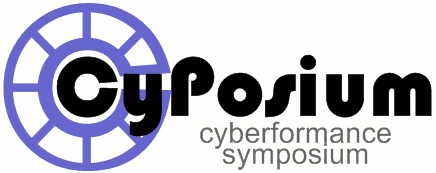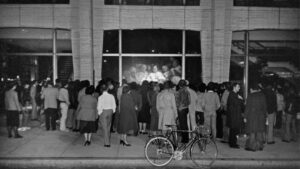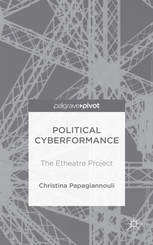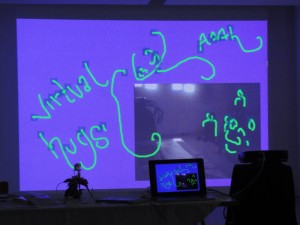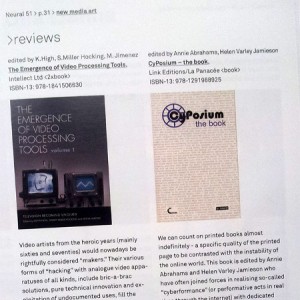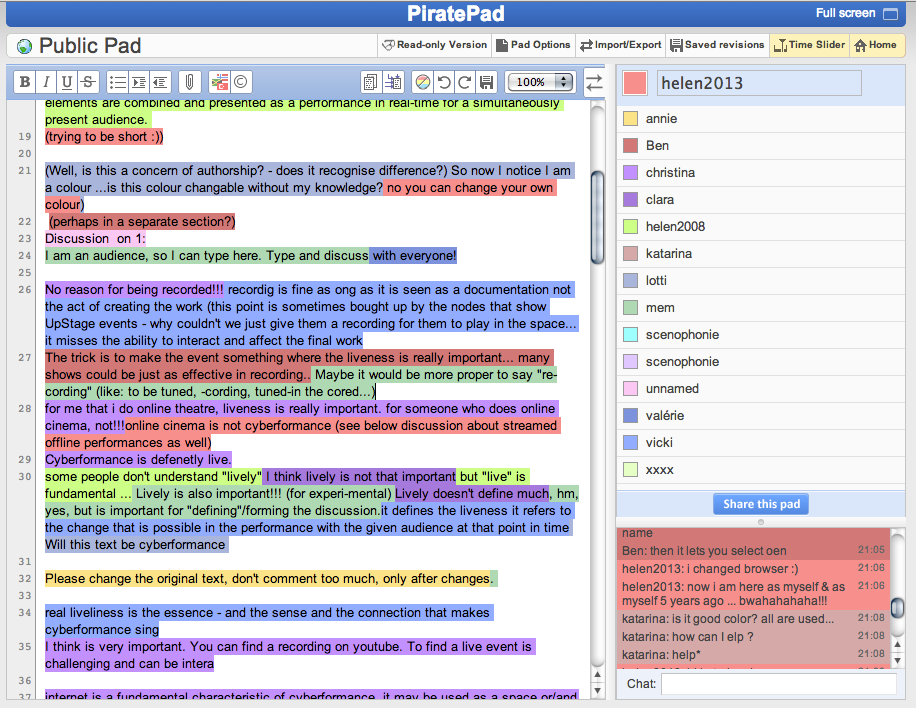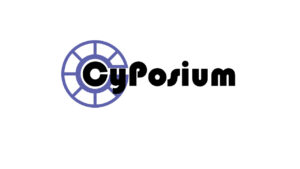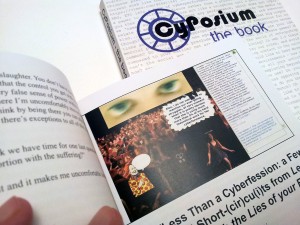 Published by Link Editions and La Panacée, CyPosium – the book is a collection of material from the CyPosium. Presentations, chat and discussion excerpts, illustrations and more, contributed by international artists and CyPosium participants.
Published by Link Editions and La Panacée, CyPosium – the book is a collection of material from the CyPosium. Presentations, chat and discussion excerpts, illustrations and more, contributed by international artists and CyPosium participants.
The book is available as a free pdf or full colour hard copy.
View a recording of the launch cyberformance, and the Transmediale performance here.
Contributors: Activelayers (UK, Australia, New Zealand), Adriene Jenik (USA), Alan Sondheim (USA), Alberto Vazquez (Argentina), Annie Abrahams (Netherlands/France), Aureia Harvey and Michaël Samyn (Belgium), Clara Gomes (Portugal), Helen Varley Jamieson (NZ/Germany), Joseph DeLappe (USA), Maria
Chatzichristodoulou (Greece/UK), Maja Delak and Luka Prinčič (Slovenia), Miljana Perić (Serbia), Rob Myers (UK/Canada), Roger Mills (Australia), Ruth Catlow (UK) and Stephen A. Schrum (USA). CyPosium - The Book is edited by Annie Abrahams and Helen Varley Jamieson.
Book description
The CyPosium (2012) was a unique online symposium about cyberformance the innovative practice of live, online performance connecting remote artists and audiences via the internet. Artists have experimented in this field for as long as they have had access to the internet, and the CyPosium sought to remember some
of this ephemeral and pioneering work. CyPosium The Book continues and expands on this discussion.
Beginning on Friday 12 October 2012 at 16:00 CET, the CyPosium unfolded over the following 12 hours, involving about 100 digital artists, researchers and interested people around the world. Everything took place in real time using online performance interfaces where the audience engaged via a text chat to discuss and question.
Artists’ presentations recalled the history of the emerging practice of cyberformance, from the mid1990s to current ongoing work, and digital performance scholar Maria Chatzichristodoulou provided a contextualising introduction. The presenters, organisers and audience were located in more than 20 countries around the world.
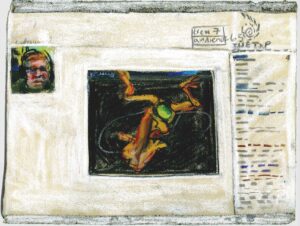
Drawing of Alan Sondheim’s presentation at the CyPosium, by Ruth Catlow
CyPosium The Book brings together selected documentation from the CyPosium (presentation texts and excerpts from the chats) along with invited articles that respond to the event, expanded presentation texts, edited email conversations, creative chat excerpt essays and illustrations. The resulting volume complements and enhances the actual CyPosium documentation available on the web site and opens the conversation up to a wider audience. We envisage the book being available as both harcopy and ebook.
CyPosium The Book will be of interest to practitioners, students and researchers of digital and online arts. While its focus is live performance (specifically cyberformance), the contributors hail from a wide range of practice both online and offline, and their writing illustrates the hybridity of contemporary arts involving
digital technologies. Music, dance, poetry, sound art and the visual arts feature, as well as entertainment/social practices such as computer games, virtual worlds and online dating. Also present are common themes that emerged during the CyPosium: the changing role of the audience; intimacy in the online environment; and mortality. This breadth of form and content reflects the everincreasing ubiquity of the internet and digital technologies in our daily lives as well as our arts practices.
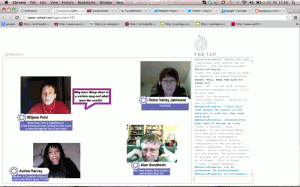 As many of the contributors are academics and scholars as well as artists, this book will be a valuable addition to courses in digital arts, contemporary performance and media studies. Thorough footnotes provide substantiating references and links to further information in specific areas. The variety and readability of the articles ensures it will also appeal to practitioners of cyberformance and related artforms as well as to anyone with an interest in innovative uses of the internet and the impact of digital technologies on society.
As many of the contributors are academics and scholars as well as artists, this book will be a valuable addition to courses in digital arts, contemporary performance and media studies. Thorough footnotes provide substantiating references and links to further information in specific areas. The variety and readability of the articles ensures it will also appeal to practitioners of cyberformance and related artforms as well as to anyone with an interest in innovative uses of the internet and the impact of digital technologies on society.
The unique voices of individual artists are clearly heard as they discuss their practice, trace their journeys, and respond to the questions and comments of the audience.
As well as any normal marketing of the book, the contributors and CyPosium organising team will promote the book through their own networks, online communities, and in their own geographical areas; we are wellconnected online people who are highly familiar with email, social media and other online tools.
